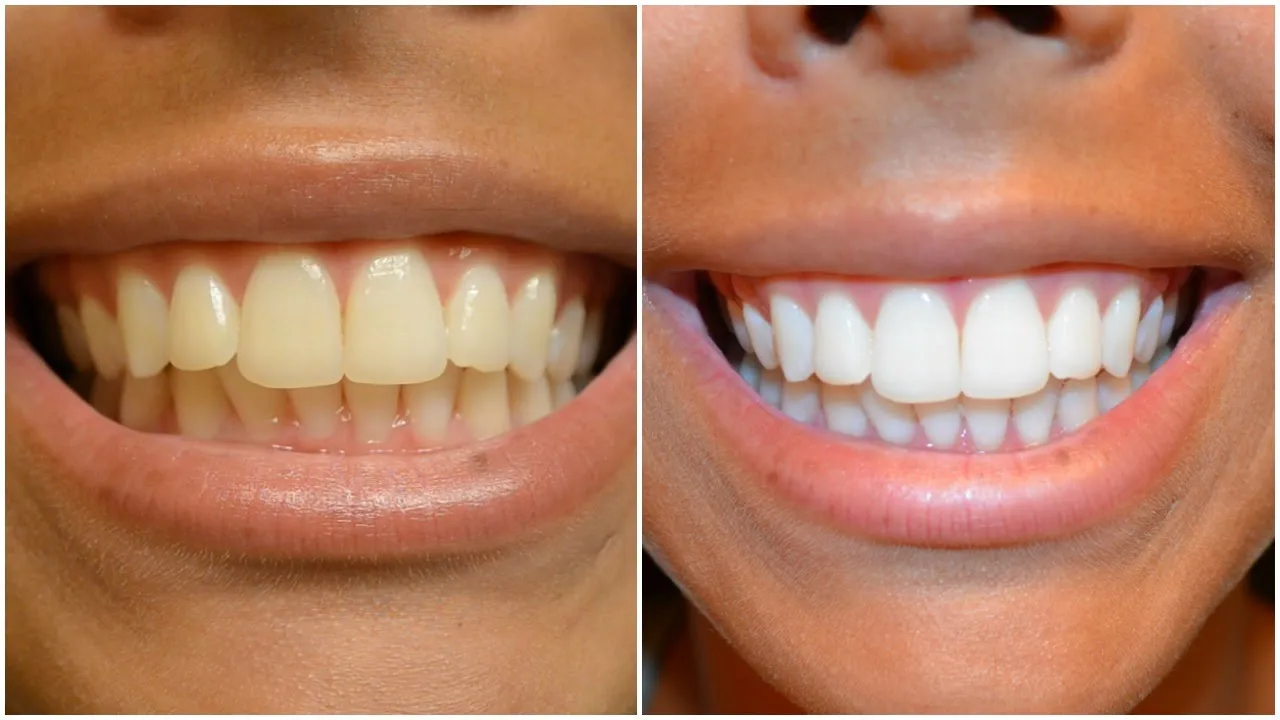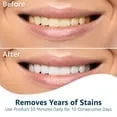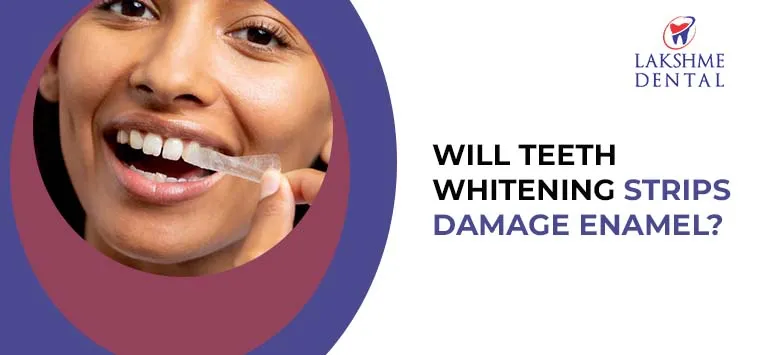What are Whitening Strips?
Whitening strips have become a popular at-home method for achieving a brighter smile. These strips typically consist of a thin, flexible plastic strip coated with a whitening agent, usually hydrogen peroxide or carbamide peroxide. They are designed to be applied directly to the teeth, adhering to the surface and delivering the active ingredient. The strips are designed to conform to the shape of your teeth, ensuring close contact with the enamel. The active ingredient then penetrates the enamel, breaking down the stains and discoloration that have accumulated over time. This process aims to restore the natural whiteness of the teeth or even surpass it, leading to a noticeably brighter smile. However, while the allure of a dazzling smile is strong, it’s important to understand the potential risks associated with these products.
How Do Whitening Strips Work?
The core mechanism of whitening strips involves the use of chemical agents, primarily peroxides, to oxidize stain molecules within the enamel. These peroxides, when applied to the teeth, release oxygen radicals that penetrate the enamel and dentin. These radicals then break down the complex organic molecules responsible for tooth discoloration. This process essentially bleaches the teeth from the inside out, reducing the appearance of stains. The concentration of the whitening agent, the duration of the application, and the frequency of use all influence the effectiveness of the strips. While the process is generally effective at removing surface stains, it’s important to understand that the aggressive nature of these chemicals can also pose risks to the tooth enamel, potentially leading to various side effects and long-term damage if not used correctly.
Top 5 Enamel Risks from Whitening Strips

While whitening strips can deliver a brighter smile, they also present several risks to the health of your enamel. The active ingredients, such as hydrogen peroxide, can cause a range of adverse effects. Understanding these potential consequences is crucial for making an informed decision about your oral care. The following sections will delve into five of the most significant risks associated with the use of whitening strips. It is important to consider these aspects when choosing to use such products to ensure the long-term health and integrity of your teeth. These risks include increased sensitivity, mineral loss, surface softening, tooth discoloration and gum irritation.
Enamel Risk 1 Sensitivity Increase
One of the most common side effects of using whitening strips is increased tooth sensitivity. This occurs because the active whitening agents, particularly peroxide, can penetrate the enamel and reach the dentin, the layer beneath the enamel that contains the tooth’s nerve endings. This exposure can irritate the nerves, causing sensitivity to hot, cold, sweet, or acidic foods and drinks. The degree of sensitivity can vary from mild discomfort to sharp, intense pain. This sensitivity can be temporary, resolving shortly after discontinuing the use of the strips. However, in some cases, the sensitivity may persist for a longer duration, depending on the frequency and intensity of the whitening treatments. It is essential to monitor for signs of sensitivity and adjust usage accordingly to mitigate the risk of discomfort.
What Causes Sensitivity with Whitening Strips?
Tooth sensitivity caused by whitening strips stems from the way the whitening agents interact with the tooth structure. The hydrogen peroxide or carbamide peroxide in the strips can permeate the enamel, which is porous and allows the bleaching agent to reach the dentin. The dentin contains microscopic tubules that lead directly to the nerve of the tooth. When these tubules become exposed to the whitening agent, it can irritate the nerve, leading to the sensation of sensitivity. Additionally, whitening strips can dehydrate the teeth, making them more susceptible to temperature changes. This dehydration temporarily opens up the tubules further, amplifying the sensitivity response. The overall effect is a heightened awareness of external stimuli, causing discomfort when consuming certain foods or beverages.
How to Manage Sensitivity

If you experience tooth sensitivity while using whitening strips, there are several steps you can take to manage the discomfort. First, reduce the frequency of use or shorten the application time. Switching to a lower-concentration product may also help. Using a toothpaste designed for sensitive teeth, which contains ingredients like potassium nitrate, can help block the tubules and reduce nerve irritation. Avoid consuming extremely hot or cold foods and beverages, as these can exacerbate sensitivity. If sensitivity persists or worsens, consult with your dentist. They may recommend other treatments, such as fluoride treatments, to strengthen the enamel and reduce sensitivity. Moreover, your dentist can assess whether the sensitivity is related to any underlying dental issues that need attention.
Enamel Risk 2 Mineral Loss
Prolonged or excessive use of whitening strips can lead to mineral loss from the enamel, a process known as demineralization. The whitening agents, particularly peroxides, can weaken the enamel structure by leaching out essential minerals like calcium and phosphate. This mineral loss makes the enamel more porous and susceptible to erosion. While the enamel can remineralize itself naturally through saliva, the rate of demineralization can outpace the remineralization process if whitening strips are overused or used improperly. This imbalance can result in weakened enamel, which increases the risk of cavities, discoloration, and further dental problems. Therefore, moderation is important when using whitening strips to minimize the potential for mineral depletion and its adverse effects.
The Chemistry of Enamel and Whitening Agents
The interaction between enamel and whitening agents is rooted in chemical processes. Tooth enamel is primarily composed of hydroxyapatite, a mineral structure that provides its hardness and protective properties. Whitening agents, such as hydrogen peroxide, work by oxidizing the stain molecules within the enamel. However, this process can also affect the enamel itself. The peroxide molecules can break down the hydroxyapatite structure by reacting with the mineral components, leading to the release of calcium and phosphate ions. This process results in demineralization, where the enamel loses its mineral content and becomes more porous. The rate of this reaction depends on the concentration of the whitening agent, the duration of contact, and the frequency of application. Understanding these chemical interactions is crucial for comprehending the potential risks and taking preventive measures.
How to Prevent Mineral Loss

There are several ways to prevent or minimize mineral loss while using whitening strips. Limit the frequency and duration of treatment, following the instructions provided by the manufacturer. Using a toothpaste with fluoride can help remineralize the enamel and strengthen it against the effects of the whitening agents. Fluoride promotes the incorporation of minerals back into the enamel structure, helping to repair minor damage. Avoiding acidic foods and drinks, especially immediately after using whitening strips, can also help protect the enamel. Acidic substances can further erode the weakened enamel. Regular dental check-ups and professional fluoride treatments can provide additional support to maintain enamel health. These treatments help to replenish the mineral content and protect teeth from damage. By adopting these strategies, you can minimize the risk of mineral loss and maintain healthy enamel.
Enamel Risk 3 Surface Softening
Whitening strips can cause temporary softening of the enamel surface. This happens because the peroxide agents disrupt the surface structure of the enamel during the bleaching process. While the softening is often temporary, it makes the enamel more vulnerable to abrasion and erosion. The surface becomes more susceptible to damage from brushing, acidic foods, and other environmental factors. The extent of softening depends on the concentration of the whitening agent and the duration of exposure. Overuse or incorrect use of whitening strips increases the risk of significant softening, which can contribute to long-term damage if not addressed. Therefore, it is crucial to use these products according to the directions and be mindful of any changes in enamel texture.
The Impact of Peroxide on Enamel
Hydrogen peroxide, the primary active ingredient in many whitening strips, has a significant impact on tooth enamel. It works by penetrating the enamel and dentin, breaking down the stain molecules that cause discoloration. However, this process is not without its side effects. Peroxide can also weaken the enamel structure by oxidizing and disrupting its mineral composition. This can lead to a temporary softening of the enamel surface and an increased risk of erosion. Repeated exposure to high concentrations of peroxide over extended periods can exacerbate these effects, potentially leading to long-term damage. The level of impact depends on factors such as the concentration of peroxide, the duration of application, and the frequency of use. Proper usage and adherence to instructions are essential to minimizing adverse effects on enamel health.
Tips for Minimizing Surface Softening

To minimize the risk of surface softening, use whitening strips as directed. Avoid overuse or prolonged application, and do not exceed the recommended frequency. Using a toothpaste with fluoride can help remineralize the enamel and harden the surface. Fluoride aids in the re-incorporation of minerals into the enamel, helping to counteract the softening effect. After using whitening strips, avoid brushing your teeth vigorously or consuming acidic foods or drinks for at least 30 minutes, as these can further erode the softened enamel. Consider waiting longer before brushing to allow the enamel to re-harden. Regular dental check-ups and professional cleanings can also help monitor enamel health and address any issues promptly. Consult your dentist for recommendations on the best oral care practices to protect your enamel while whitening your teeth.
Enamel Risk 4 Tooth Discoloration
While whitening strips are designed to brighten teeth, paradoxically, they can sometimes lead to uneven or worsened tooth discoloration. This can occur for several reasons. If the whitening agent does not penetrate the enamel uniformly, it can result in patchy or uneven whitening, making existing stains more noticeable. Moreover, if the underlying cause of discoloration is not addressed, such as certain medications or intrinsic stains, whitening strips may not be effective and could even highlight the original problem. In some cases, the use of whitening strips can lead to a type of discoloration called “rebound staining”, where the teeth appear to darken slightly after the treatment has stopped. This is often due to the temporary dehydration of the teeth during the whitening process. Understanding these potential issues is important for managing expectations and choosing the right approach to achieve a brighter smile. Therefore, it is crucial to follow the product instructions and consult with a dental professional for personalized advice.
The Role of Whitening Strips in Discoloration
Whitening strips, if used improperly, can contribute to tooth discoloration in several ways. The whitening agent might not reach all areas of the tooth evenly, especially in cases of crowded teeth or those with restorations. This uneven application can result in an inconsistent whitening effect, causing some areas to appear whiter than others, thus highlighting pre-existing stains or imperfections. The dehydration caused by the whitening strips can also alter the tooth’s appearance temporarily. During the whitening process, the enamel loses some moisture, which can make the teeth appear whiter initially, but this effect is temporary, and the teeth may revert to their original color or even appear darker once rehydrated. Furthermore, overuse or misuse of whitening strips can exacerbate existing staining problems. For instance, strips might be ineffective against certain types of stains, such as those caused by tetracycline, and can make them more noticeable.
Alternatives to Whitening Strips for Discoloration

There are several alternatives to whitening strips that may be more suitable for addressing tooth discoloration. Professional teeth whitening performed by a dentist offers a more controlled and often more effective approach. Dentists can use higher concentrations of whitening agents under supervision, delivering better results and reducing the risk of adverse effects. Veneers or dental bonding can be used to cover up surface stains and improve the appearance of discolored teeth. These options provide a cosmetic solution that is particularly useful for addressing intrinsic stains or structural issues. For mild discoloration, your dentist might recommend the use of prescription-strength whitening toothpastes or gels, which contain higher concentrations of bleaching agents than over-the-counter products. The best approach will depend on the specific type and cause of the discoloration. Consulting with a dentist is essential to determine the most appropriate solution.
Enamel Risk 5 Gum Irritation
Gum irritation is a common side effect associated with the use of whitening strips. This can range from mild redness and swelling to more severe discomfort and even chemical burns. The active whitening agents, particularly hydrogen peroxide, can irritate the delicate gum tissues if they come into direct contact. This can occur if the strips are not applied correctly, if they overlap the gums, or if the individual has sensitive gums. The severity of the irritation depends on factors such as the concentration of the whitening agent, the duration of contact, and individual sensitivity. Gum irritation is usually temporary, resolving shortly after stopping the use of the strips. However, in some cases, it can persist or lead to more serious issues. It is important to be aware of the risks and to take precautions to protect the gums when using whitening strips.
Why Gum Irritation Happens
Gum irritation from whitening strips is primarily due to the chemical nature of the whitening agents, particularly hydrogen peroxide. These agents are designed to oxidize and break down stain molecules in the enamel. However, when they come into contact with the soft tissues of the gums, they can cause irritation and inflammation. The gum tissues are much more sensitive than enamel, and they do not have the same protective mechanisms. The high concentration of the peroxide can damage the cells in the gums, leading to redness, swelling, and discomfort. If the whitening strips are not applied properly, they can overlap the gum line, increasing the likelihood of contact and irritation. Even if the strips are applied correctly, some of the whitening agent can still seep out and affect the surrounding tissues. Individual sensitivity to the chemicals can also play a role, with some people being more prone to irritation than others. Protecting the gums is crucial to minimizing this risk.
How to Treat Gum Irritation

If you experience gum irritation from whitening strips, there are several ways to alleviate the discomfort and promote healing. First, stop using the whitening strips immediately. Rinse your mouth with water or a mild saltwater solution to help soothe the irritated tissues. Avoid using harsh mouthwashes or brushing your teeth aggressively, as this can further irritate the gums. Applying a small amount of vitamin E oil to the affected areas can provide some relief and promote healing. Over-the-counter pain relievers, such as ibuprofen or acetaminophen, can help reduce pain and inflammation. If the irritation is severe or persists, consult your dentist. They may prescribe a topical corticosteroid cream to reduce inflammation or recommend other treatments to promote healing. Also, your dentist can evaluate whether the irritation is a result of improper strip application or other underlying issues and provide tailored advice to ensure that your gums heal properly.
Alternatives to Whitening Strips
If you are concerned about the potential risks of whitening strips, several alternatives can help you achieve a brighter smile. One popular option is using whitening toothpastes. These toothpastes often contain mild abrasive agents or chemical compounds that help remove surface stains. While they are generally less effective than strips, they are also less likely to cause significant enamel damage or gum irritation. Another option is to use whitening gels with custom-fitted trays. These gels are usually prescribed by a dentist and allow for a more controlled application of the whitening agent, reducing the risk of uneven whitening or gum irritation. You can also opt for over-the-counter whitening gels that come with pre-made mouth trays. For more dramatic results, consider professional teeth whitening at your dentist’s office, which uses higher concentrations of whitening agents and provides more effective results.
Professional Teeth Whitening Options
Professional teeth whitening, performed by a dentist, offers a safe and effective alternative to over-the-counter whitening products. Dentists can use higher concentrations of hydrogen peroxide or other whitening agents, which can produce more dramatic results. The treatment typically involves applying the whitening agent to the teeth and activating it with a special light or laser. This process helps to break down stain molecules more effectively and efficiently. The dentist carefully monitors the process to ensure the safety of your enamel and gums. Before the procedure, the dentist usually protects the gums with a special barrier to prevent irritation. Professional whitening can address a wider range of stains and discoloration, providing a more consistent and brighter smile. The results often last longer than those achieved with at-home products. Because the treatment is performed under professional supervision, any potential risks or side effects can be promptly managed, and the dentist can recommend the most appropriate options.
Maintaining Healthy Enamel After Whitening

After whitening your teeth, whether at home or by a professional, it is essential to take steps to maintain the health of your enamel and preserve your bright smile. Use a fluoride toothpaste to help remineralize your enamel and strengthen your teeth. Brush gently, using a soft-bristled toothbrush, and avoid excessive force. This will help prevent abrasion and erosion of your enamel. Limit your consumption of highly acidic foods and drinks, such as citrus fruits, sodas, and vinegar, as they can weaken the enamel and make your teeth more susceptible to damage. Avoid tobacco products, as smoking and chewing tobacco can stain your teeth and diminish their whiteness. Regular dental check-ups and professional cleanings are essential for maintaining good oral health and can help identify and address any issues with your enamel. Following these simple steps can help protect your enamel and help you maintain a healthy and beautiful smile.
